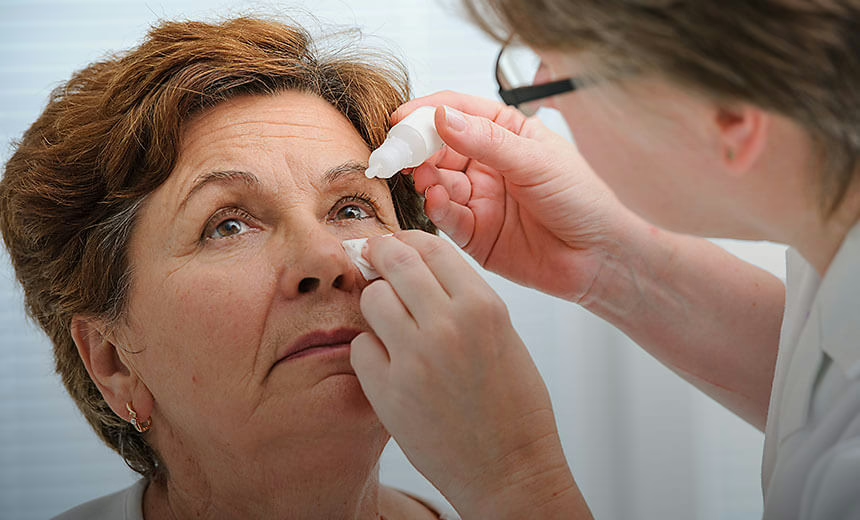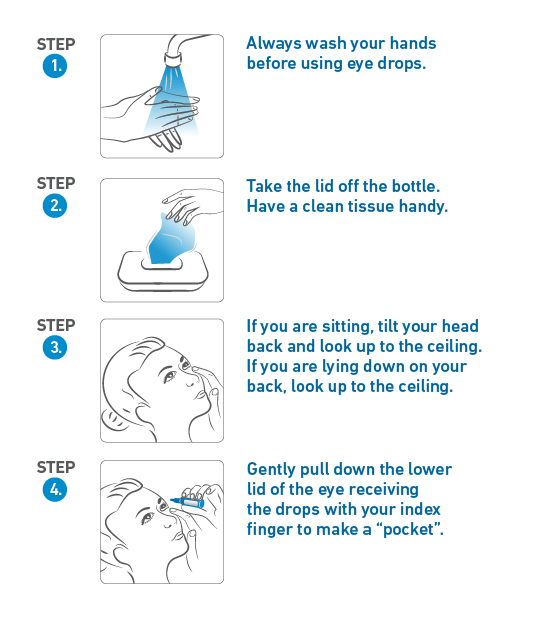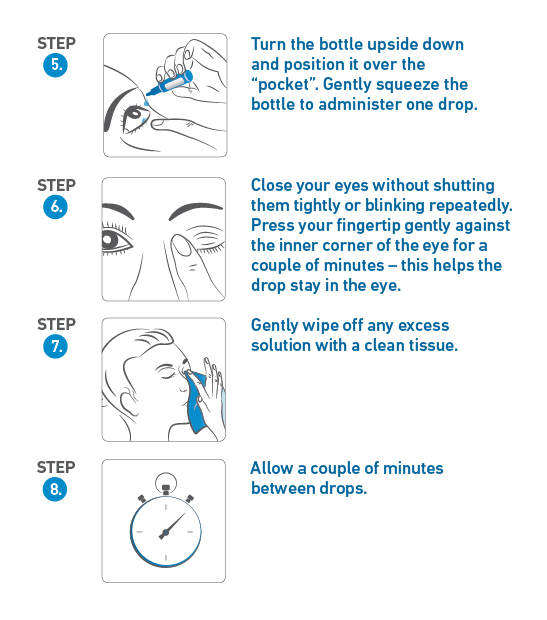"*" indicates required fields
Fact sheet


Eye drops
31/03/2023

Eye drops are used to treat various eye conditions. There are several different kinds of eye drops, which have different ways of working. To make sure you get the maximum benefit from your eye drops, it is important to use them correctly.
Eye drops are a type of medication.
Before you start
- Always check the label before using eye drops, and make sure they are the correct drops recommended by your doctor.
– Some other substances, such as glue, are sold in similar-looking bottles to eye drops. - Carefully check the dosage instructions for each medication.
- Check if you need to shake the bottle before using.
- If you wear contact lenses, remove them before using eye drops.
- Avoid touching your eye with the tip of the eye dropper/bottle.
How to use your eye drops


Steps:
- Always wash your hands before using eye drops.
- Take the lid off the bottle. Have a clean tissue handy.
- If you are sitting, tilt your head back and look up to the ceiling. If you are lying down on your back, look up to the ceiling.
- Gently pull down the lower lid of the eye receiving the drops with your index finger to make a “pocket”.
- Turn the bottle upside down and position it over the “pocket”. Gently squeeze the bottle to administer one drop.
- Close your eyes without shutting them tightly or blinking repeatedly. Press your fingertip gently against the inner corner of the eye for a couple of minutes – this helps the drop stay in the eye.
- Gently wipe off any excess solution with a clean tissue.
- Allow a couple of minutes between drops.
Important points to note
- As with all medications, keep your eye drops out of the reach of children.
- Most eye drops should be stored in a cool, dry place. However, some types of drops (e.g. chloramphenicol) should be kept
in the fridge, so be sure to check the label. - Do not keep or use eye drops beyond the printed expiry date.
- If you develop a reaction or allergy to your eye drops, consult your doctor.
- If you wear contact lenses, wait for at least 20 minutes after administering the drops before you put your lenses back in.
- If you forget a dose of your eye drops, use them as soon as you remember. Then administer the next dose at the usual time.
- If you have difficulty administering your eye drops, ask someone else to do it for you.
The information on this page is general in nature. All medical and surgical procedures have potential benefits and risks. Consult your ophthalmologist for specific medical advice.
Date last reviewed: 2024-05-22 | Date for next review: 2026-05-22
